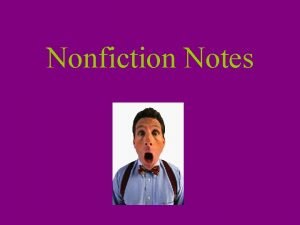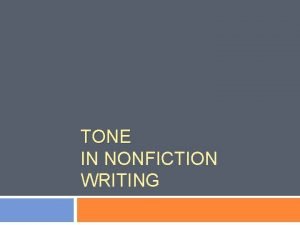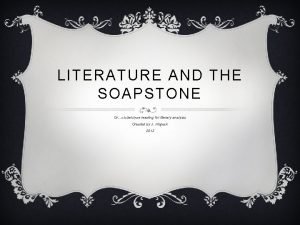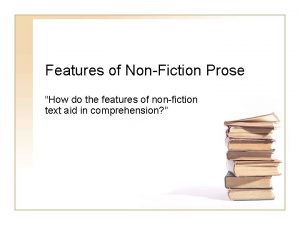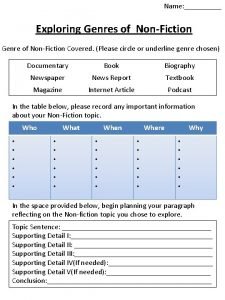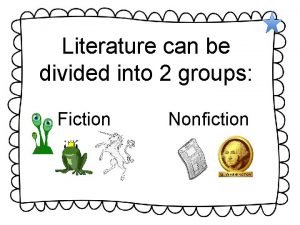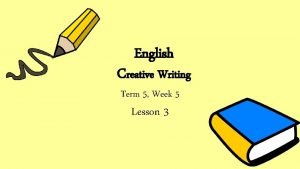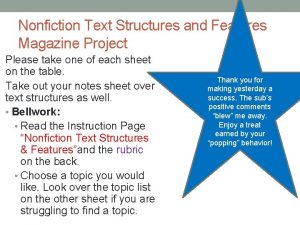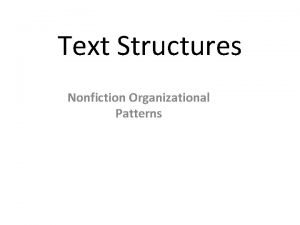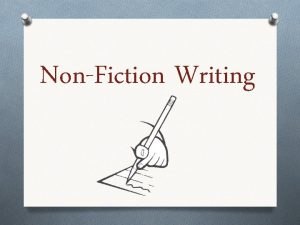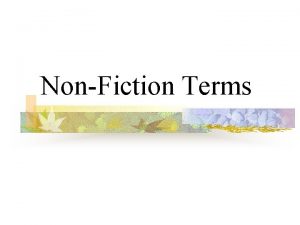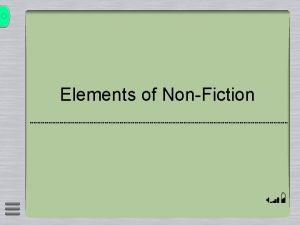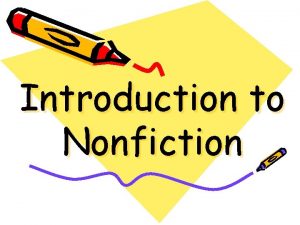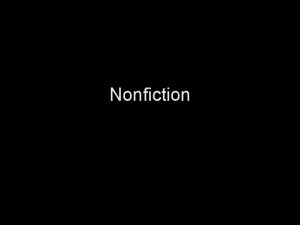Nonfiction Notes What is nonfiction Nonfiction is a









- Slides: 9

Nonfiction Notes

• What is nonfiction? Nonfiction is a form of literature based primarily on facts. • It is prose writing that presents and explains ideas or tells about real people, places, objects, or events.

• The Five Main Purposes of Nonfiction Writing: • Entertain • Inform • Reflect • Describe • Persuade

• Types of Nonfiction Writing: • Narrative – written as a story. – Biographies – a life story written by another person. – Autobiographies – the writer’s account of his or her own life. – Memoirs and Journals – contain personal thoughts and reflections. – Travel Literature – records journeys in the world, which are often journeys within yourself. – Letters – written texts addressed to a particular person or organization. – Blogs – (a. k. a. web logs) journals posted and frequently updated for an online audience.

• • Expository – writing that explains or informs. It presents facts and ideas, or explains a process. Essays, speeches, and textbooks are all examples of expository writing. Persuasive – writing that is intended to convince the reader to adopt a particular point of view or take a particular course of action. Newspaper editorials, letters to the editor, speeches, essays, and advertisements are all forms of persuasive writing.

• Descriptive – writing that is a portrait, in words, of a person, place, or object. Descriptive writing uses images that appeal to the five senses. Most forms of writing can be descriptive. • For each of these types of nonfiction, the writing may be objective, based on facts, or subjective, based on opinion. Sometimes the writing is a combination of the two, but, more often than not, a reader can identify which is more common.

• Elements of Nonfiction Writing: • Organization – the way a writer chooses to arrange and present information in a single piece of writing. – Chronological – presents information in time order, from first to last or last to first. – Compare-and-Contrast – shows the ways in which two or more subjects are similar and different. – Cause-and-Effect – shows the relationship among events. – Problem-and-Solution – identifies a problem and then offers a solution.

• Tone – the writer’s attitude toward his or her audience and subject. – Formal – uses formal language, no slang. Everything is grammatically correct. – Informal – written as though you were writing to a friend. • Voice – the writer’s way of “speaking” in his or her writing.

• Objective vs. Subjective Writing – – Objective – facts that can be proved true by the senses. – Subjective – verifiable (true) only by reference to your own state of mind and experiences. Nobody knows the truth of that state except the writer.
